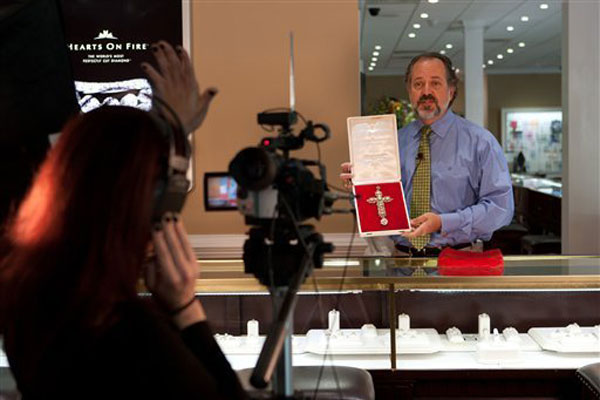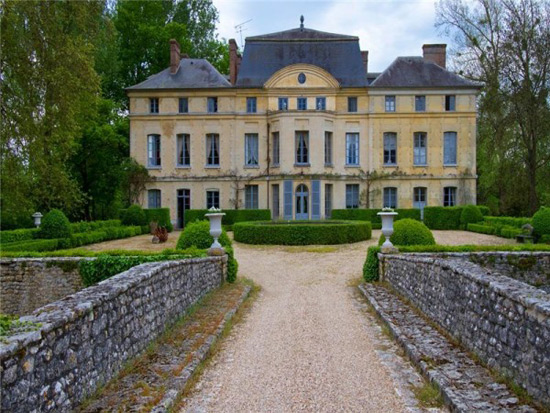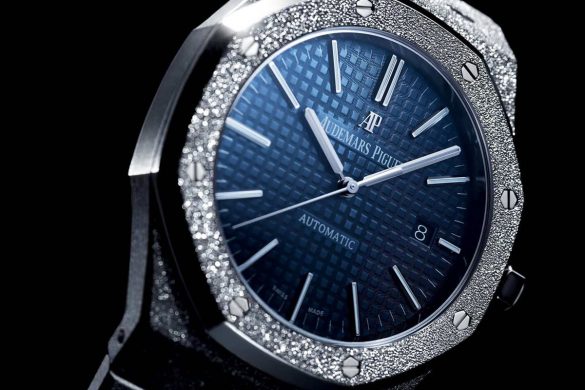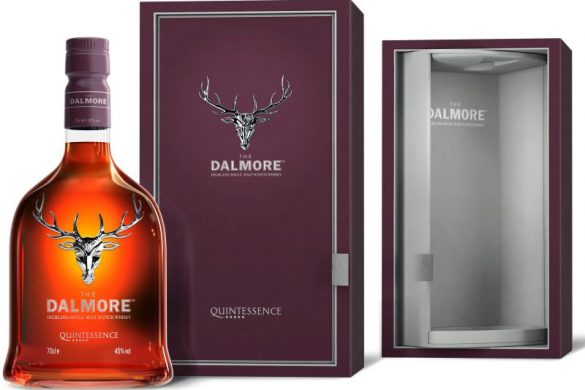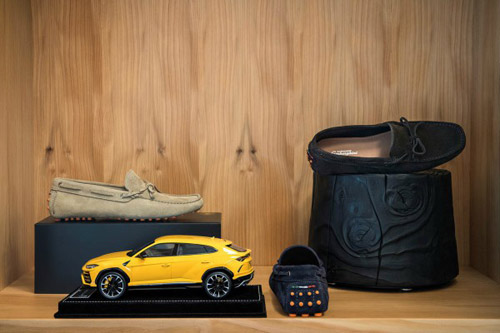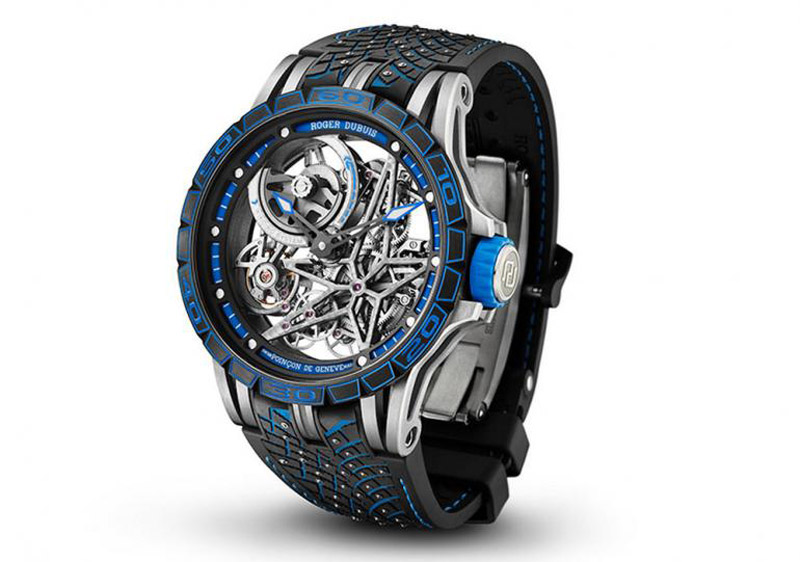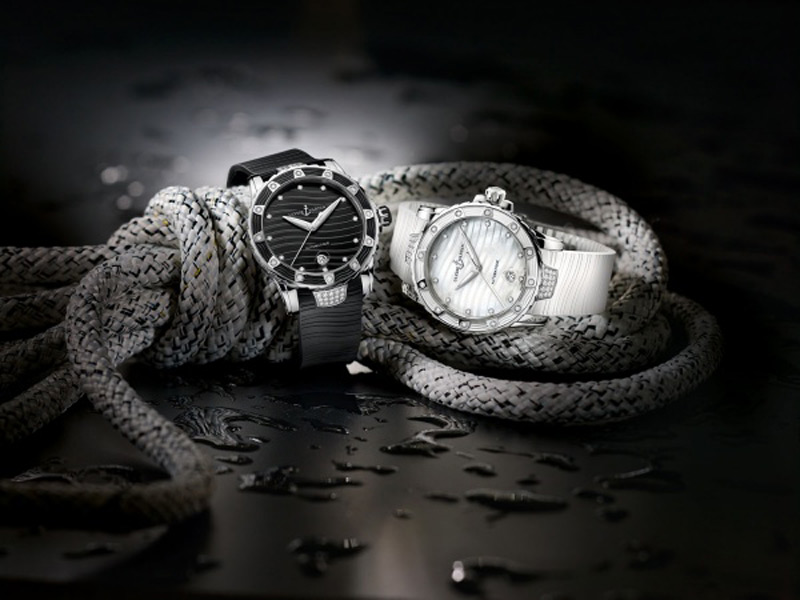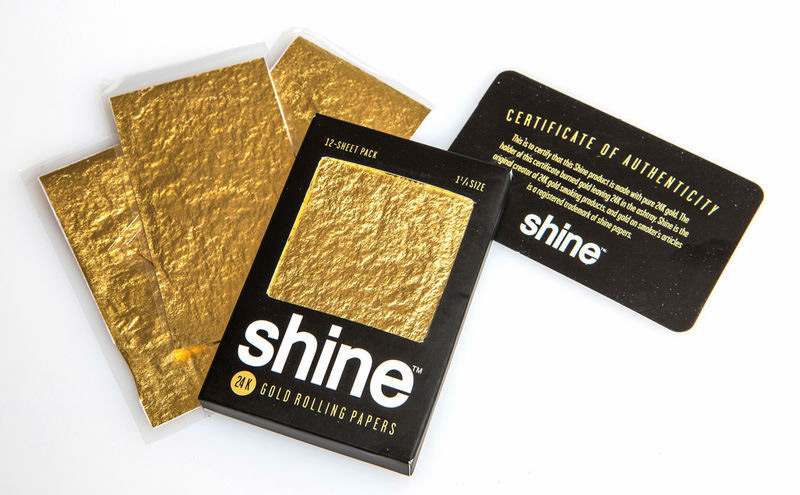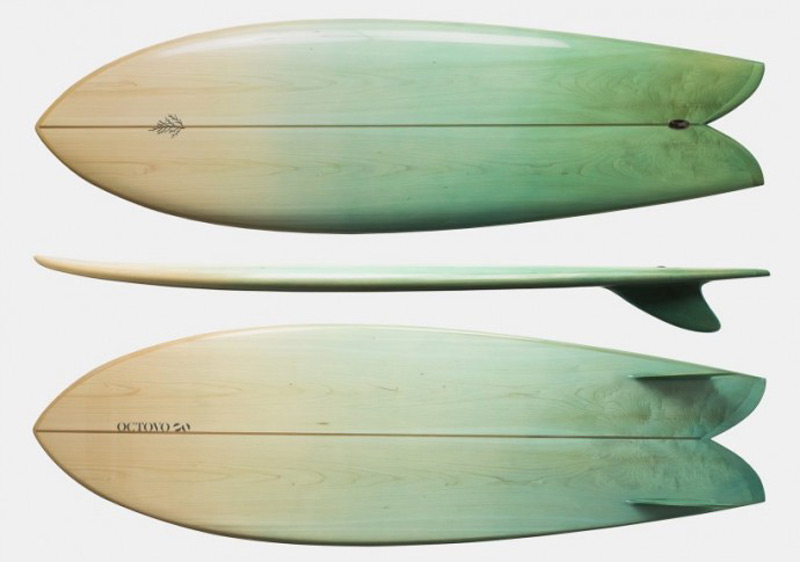
Alan Perry, owner of jewelry store Perry’s Emporium, displays the papal jewelry
Two diamond-studded pieces of jewelry donated by Pope Paul VI to the United Nations nearly 50 years ago have found a temporary home in Wilmington.
(By TOM BREEN, Associated Pres – RALEIGH, N.C.) – In the unlikely location of a North Carolina jewelry store near the beach, a lavishly jeweled cross and a ring once owned by Pope Paul VI sit under lock and key, awaiting transfer to an even less familiar venue for symbols of Roman Catholic authority: an eBay auction.
The items have turned up at a Wilmington store owned by a Southern Baptist with a flair for self-promotion. It’s the latest stop on a strange journey involving luminaries ranging from UN Secretary General U Thant to Evel Knievel, and which began with Paul VI’s novel decision to allow some of his jewelry to be sold to raise money for charity.
One of the items is a pectoral cross, given to clergy who attain the rank of bishop or higher to signify their office. The pope’s donation was a testament to his willingness to engage the contemporary world by de-emphasizing the importance of such regalia.
“This is new for me,” said jewelry store owner Alan Perry, who thinks the items might fetch $800,000 to $900,000 at auction. “That’s why we’re going to put it up on eBay. It’s only worth what someone’s willing to pay for it, and eBay might be a good measure to see if people are interested.”
Perry was enlisted by a widow in Wilmington whose husband had bought the ring and cross in the 1970s. A New York firm had tried to sell the items for $1.25 million, but hadn’t been able to find a buyer. After serving on the board of a local charity with Perry, the woman asked if he would try his luck.
“She came in with all this paperwork and with the cross and ring, and I just said, ‘Holy mackerel,'” Perry said.
It’s not the first time that his store, Perry’s Emporium, has made headlines. Perry appeared on ABC’s Good Morning America after he vowed last year to refund the cost of jewelry bought over a two-week period if a city in the North Carolina mountains had three inches of snow on Christmas. It did, and he paid out roughly $400,000 that was covered by insurance.
He plans to put the cross and ring on public display starting April 14 through Holy Week with an armed guard.
The Vatican confirmed that the items are the “personal” ring and pectoral cross of Paul VI. Each pope’s official ring is smashed with a hammer when he dies.
Paul VI is often overlooked, partly because of the enduring popularity of the pontiffs whose reigns bracketed his. He succeeded the charismatic John XXIII, who called the historic Second Vatican Council. After Paul’s death in 1978, the next pope died roughly a month later, to be followed by John Paul II, revered by Catholics and non-Catholics around the world.
Although he implemented the bulk of the changes that came from the council, Paul is vilified by liberal Catholics and others for his 1968 encyclical Humanae Vitae, which positioned the church definitively against all forms of artificial birth control.
“Paul VI kind of gets lost in the shuffle of history, but I think people are eventually going to come to know his contributions in a much fuller way,” said Geraldine Rohling, archivist at the Basilica of the National Shrine of the Immaculate Conception in Washington, D.C. “He was truly an amazing man.”
United Nations documents about the jewelry obtained by The Associated Press shed further light on how they began their unusual trip.
The first pontiff to really travel the globe, Paul VI donated the ring and cross during a 1965 visit to the UN. He intended the items to be auctioned and the proceeds used to relieve human suffering. They were bought in 1967 for $64,000 by Chicago jeweler Harry Levinson, with the money being split among four UN agencies.
The items changed hands several times after that, including a period when they were owned by Evel Knievel, according to a 2004 biography of the daredevil by Stuart Baker, which referred to the items as Knievel’s “most extravagant jewelry purchase” in an inventory that also included a 13-carat diamond ring shaped like a motorcycle.
The donation to the UN was more than a canny fundraising strategy, though. Paul VI’s tenure coincided with most of the Second Vatican Council, which brought seismic shifts to Catholicism, including a new enthusiasm for engaging the contemporary world. Part of that, for Paul, included de-emphasizing what had become symbols of Catholic triumphalism, like the pectoral cross.
He also donated his papal tiara, the three-tiered crown symbolizing the pope’s authority, as a fundraising tool to the Catholic Church in America. It remains on display at the Basilica of the National Shrine, and none of his successors have been crowned with tiaras.
“The business of giving away objects of value that also symbolized power, it showed how Pope Paul spoke out a great deal for the poor and the Third World,” said the Rev. Thomas Worcester, a Jesuit priest and history professor at the College of the Holy Cross. “He really created a new style of the papacy.”

